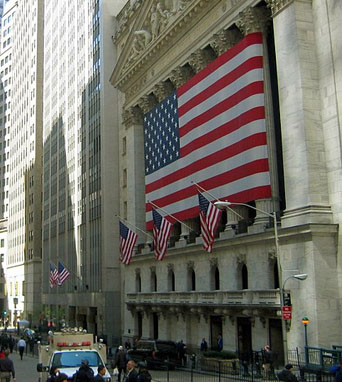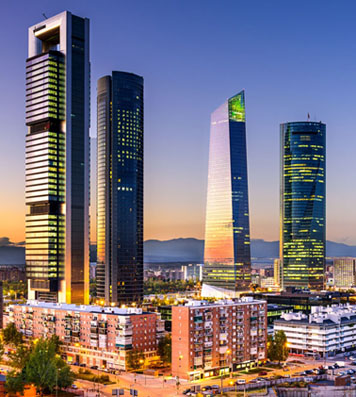Does COVID-19 have anything to do with international and regional financial centres/centers, etc … etc?
May 18th, 2020 | By Dominic Berry | Category: In Brief
It is not easy to be humourous about COVID-19. But that is my assignment here and I will try, more or less. (While still being half-serious between the lines … maybe?)
My point of departure is a May 13, 2020 article in the venerable UK publication NewStatesman, by Jerome Roos who “teaches political economy at the London School of Economics, and is currently writing a history of global crises for Jonathan Cape.”
The article is called “How plagues change the world … Could the coronavirus pandemic have an effect as lasting and profound as the Black Death?”

To elaborate briefly, Mr. Roos writes : “Throughout the ages, infectious diseases have left an indelible mark on the future course of world history … But if we had to single out one epoch-making pandemic, it would be the Black Death of the mid-14th century … that heralded the ‘waning of the Middle Ages’… While Covid-19 is a different kind of disease … could the crisis end up playing a similar role for the late-modern world as the Black Death did for the late-medieval one? … Will this pandemic, too, remake the world as we know it?”
As an at least very slight and possibly somewhat humourous early half-stab at this kind of question, I thought I would briefly ponder any possible ties between COVID-19 in the early 21st century and the history of financial centres.
Strictly for convenience I am anchoring my understanding of the subject in two accessible websites – the Wikipedia article on “Financial centre” and an article called “The World’s Leading Financial Cities” on the Investopedia site.
As Wikipedia explains : “A financial centre is defined by the IMF [International Monetary Fund] as encompassing … International Financial Centres (IFCs) … Regional Financial Centres (RFCs) … and Offshore Financial Centres (OFCs).”
According to both the Global Financial Centres Index and the Xinhua—Dow Jones International Financial Centers Development Index, the two most highly rated International Financial Centres right now are New York City and London.
According to Investopedia, New York is “commonly regarded as the finance capital of the world … famous for Wall Street, the most happening stock market and the New York Stock Exchange (NYSE), the largest stock exchange by market capitalization.” (A historian of the longer term might note that New York started to replace London in this role in the earlier 20th century.)
Examples of regional financial centres include Milan in Italy, Madrid in Spain, Toronto in Canada, and Sydney in Australia. (A historian might also note that in Canada Toronto started to take over from Montreal about the same time as New York started to take over from London.)
Setting this very hasty sketch beside the recent international COVID-19 numbers, as reported online by the “worldometer” as of May 18, 2020, 05:19 GMT, is at least intriguing.
The half dozen countries with the largest number of total COVID-19 cases include the USA (1), Spain (3), the UK (4), and Italy (6). New York City has the largest number of cases inside the USA and London plays a similar role in the UK. (And then regional finance centres Milan and Madrid are in Italy and Spain.)
The half dozen countries with the largest number of total COVID-19 deaths include the USA (1), the UK (2), Italy (3), and Spain (5).
I turn briefly to the case of Canada (which currently has more reported COVID-19 deaths than China!?) partly because I am Canadian, and partly because it underlines how whatever pandemic-financial connections there may be can have considerable subtlety.
Though Toronto some time ago succeeded Montreal as both Canada’s most populous metropolis (1976) and leading financial centre, in 2020 Montreal’s COVID-19 statistics are more harsh than Toronto’s. And the only related argument I can think of is that, while airplane journeys are comparable, the drive from Montreal to New York is about two hours shorter than the drive from New York to Toronto. (And by city the current global financial capital in New York does seem to have become, at this point in any case, the global epicenter of the 2020 COIVID-19 pandemic as well.)

To conclude for now, in the broadest global perspective as of mid May 2020 it also seems that Asia (including Australia and New Zealand, along with China, South Korea, Singapore, and Japan) has apparently done much better than Europe and North America fighting COVID-19.
Bringing the intellectual quest back to North America, it could similarly be said that such Pacific coast places as California and British Columbia seem to have done better with COVID-19 at this point than such more Atlantic-oriented places as New York State and Ontario.

And this raises the prospect that in dealing with the evolving new world economy Hawaii-born-and-raised Barack Obama’s “pivot to Asia” made a lot more sense than anything the present US administration has done.
Can this kind of policy be somehow revived if God or Allah or the Great Scientist in the Sky looks favourably on humanity, and Joe Biden and his female vice-presidential nominee finally win the US election on November 3?
Of course we will just have to wait and see.
Meanwhile RIP and many rounds of buoyant applause to the ongoing spirit of the late great US comedian Fred Willard! He has been one of the things that has really Made America Great Again in my lifetime. I especially remember him on SCTV and Fernwood 2 Night. Sometimes just the expression on his face could make you laugh.




